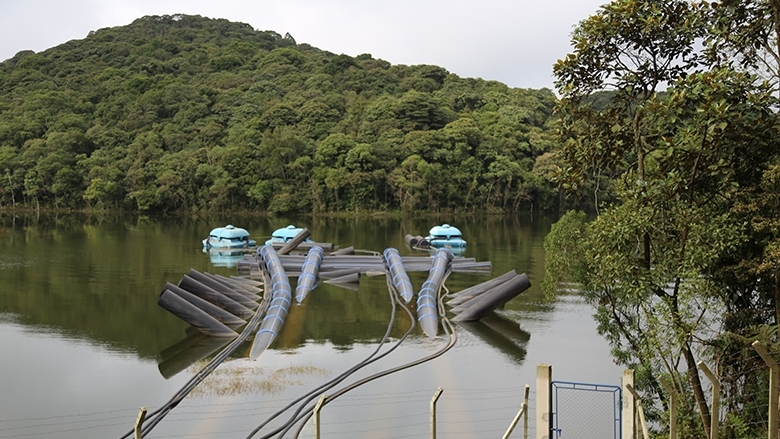Results
The program accomplished its main goals of ensuring water supply and quality for the São Paulo municipal area, improving sanitation services and strengthening the capacity of municipal and other responsible authorities to plan, manage, and monitor water quality, supply, and pollution loads.
The program mitigated the impacts of the 2014–2015 drought crisis through supply-side and demand-side interventions including:
- Constructing the Grajaú Water Treatment Plant (US$21.4 million), benefiting 130,000 people;
- implementing a water leakage reduction program that increased water supplies to the São Paulo Metropolitan Area by replacing the water pipelines with the highest leakage rates;
- constructing the Boa Vista Water Treatment Plant, including filtering membranes (US$13.1 million), and increasing the water treatment capacity at the Guarapiranga plant by an additional 1 cubic meter per second (m3/sec), benefiting 300,000 inhabitants;
- constructing the water intake from Rio Pequeno to Rio Grande and, from Rio Grande, a transfer scheme to Taiaçupeba Dam (US$9.1 million), thus increasing the water production to 4 m3/sec to the Alto Tietê water system, reducing the pressure to the highly-stressed Cantareira water system, and maintaining the reserve capacity through the dry season to supply 1.2 million people.
These interventions increased yearly water production by 157,680,000 cubic meter (m3), reaching 100 percent of the established target.
- Sanitation systems were improved and expanded in three low-income neighborhoods, two in Guarapiranga Basin and one in the Billings Basin, contributing to the removal of approximately 72 percent of the pollution loads. These and other SABESP investments in sanitation increased sanitation collection in Guarapiranga Basin from 60 percent to 67 percent, covering a total of around 617,000 inhabitants.
- Key nonstructural measures resulted in the increased capacity of the State of São Paulo to plan, manage, and monitor water quality and pollution loads in key sub-basins and water supply systems, including the Alto Tietê water production system and the Guarapiranga and Billing reservoirs.
Bank Group Contribution
The World Bank, through the International Bank for Reconstruction and Development, provided loans totaling US$120.82 million toward the total cost of the Integrated Water Management in Metropolitan São Paulo Adaptable Program Lending project. The Bank also mobilized a grant from the government of Japan in the total amount of US$1.0 million to finance a technical assistance activity to formulate the analytical underpinnings of the program. In addition, the Bank mobilized funding from the Water Partnership Program to support the planning and delivery of an international seminar on Integrated Urban Water Management.
Partners
The program was a joint effort by the Secretary for Water Resources and Sanitation, the Secretary of Environment, and the state-level water and sanitation utility. Other partners involved were from the São Bernardo do Campo municipality and the Municipal Housing and Environment Secretary.
Beneficiaries
The program directly benefited more than three million people with water and sanitation interventions, as well as through the creation of linear parks. Prompted by the severe drought faced by the São Paulo State, the Bank restructured the program to respond to the water supply crisis. Talking about the impacts of the program, Mr. Jerson Kelman, President of SABESP, said “the Bank acted as a great partner. Its promptness to support us by reallocating funds from sanitation to emergency water supply works was essential to ensure water to a great number of the São Paulo Metropolitan Region population (1.5 million people).”
Moving Forward
In the case of the State of São Paulo, the program focused on developing plans and technical tools to support implementation and improvement of water resource policies in the São Paulo Metropolitan Region consistent with the priorities of the implementing agencies. All project activities were part of the core activities undertaken by the State Secretariat of Water Resources. In the case of the State Water Utility, all investments supported under the program are integral to its water and sanitation infrastructure, serving about 20 million people in the São Paulo Metropolitan Region. Nonetheless, complex urban water supply and pollution challenges remain to be tackled and could require additional financing and technical assistance along with intergovernmental coordination.
